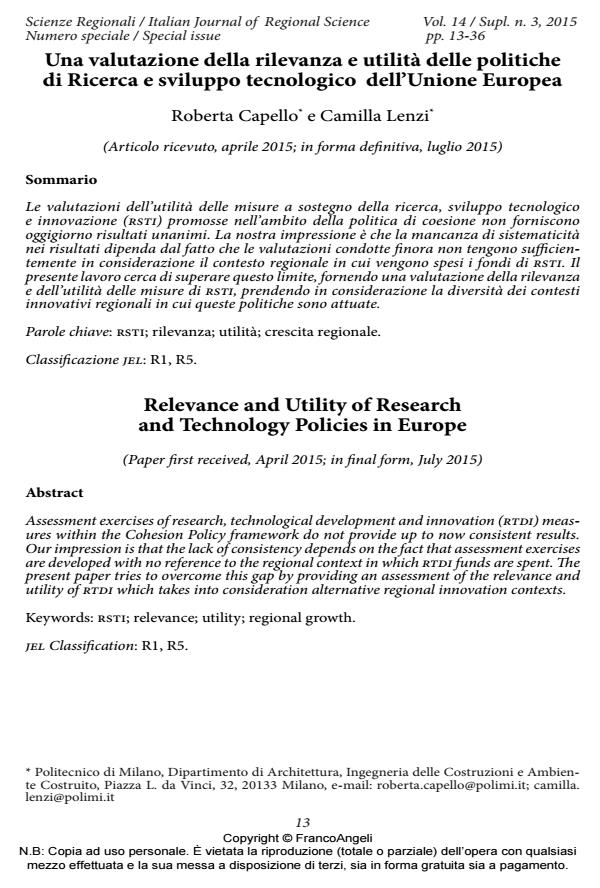Relevance and Utility of Research and Technology Policies in Europe
Journal title SCIENZE REGIONALI
Author/s Roberta Capello, Camilla Lenzi
Publishing Year 2015 Issue 2015/3 Suppl.
Language Italian Pages 24 P. 13-36 File size 290 KB
DOI 10.3280/SCRE2015-S03002
DOI is like a bar code for intellectual property: to have more infomation
click here
Below, you can see the article first page
If you want to buy this article in PDF format, you can do it, following the instructions to buy download credits

FrancoAngeli is member of Publishers International Linking Association, Inc (PILA), a not-for-profit association which run the CrossRef service enabling links to and from online scholarly content.
Assessment exercises of research, technological development and innovation (rtdi) measures within the Cohesion Policy framework do not provide up to now consistent results. Our impression is that the lack of consistency depends on the fact that assessment exercises are developed with no reference to the regional context in which rtdi funds are spent. The present paper tries to overcome this gap by providing an assessment of the relevance and utility of rtdi which takes into consideration alternative regional innovation contexts.
Keywords: Rsti; relevance; utility; regional growth.
Jel codes: R1, R5
Roberta Capello, Camilla Lenzi, Una valutazione della rilevanza e utilità delle politiche di Ricerca e sviluppo tecnologico dell’Unione Europea in "SCIENZE REGIONALI " 3 Suppl./2015, pp 13-36, DOI: 10.3280/SCRE2015-S03002